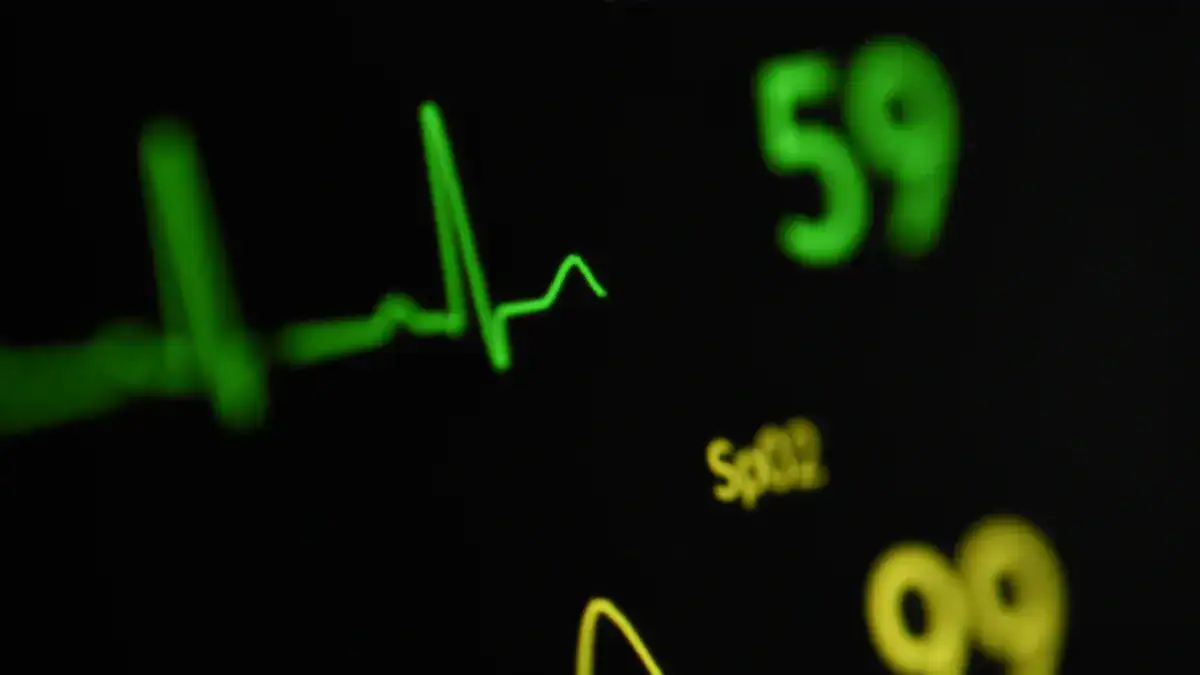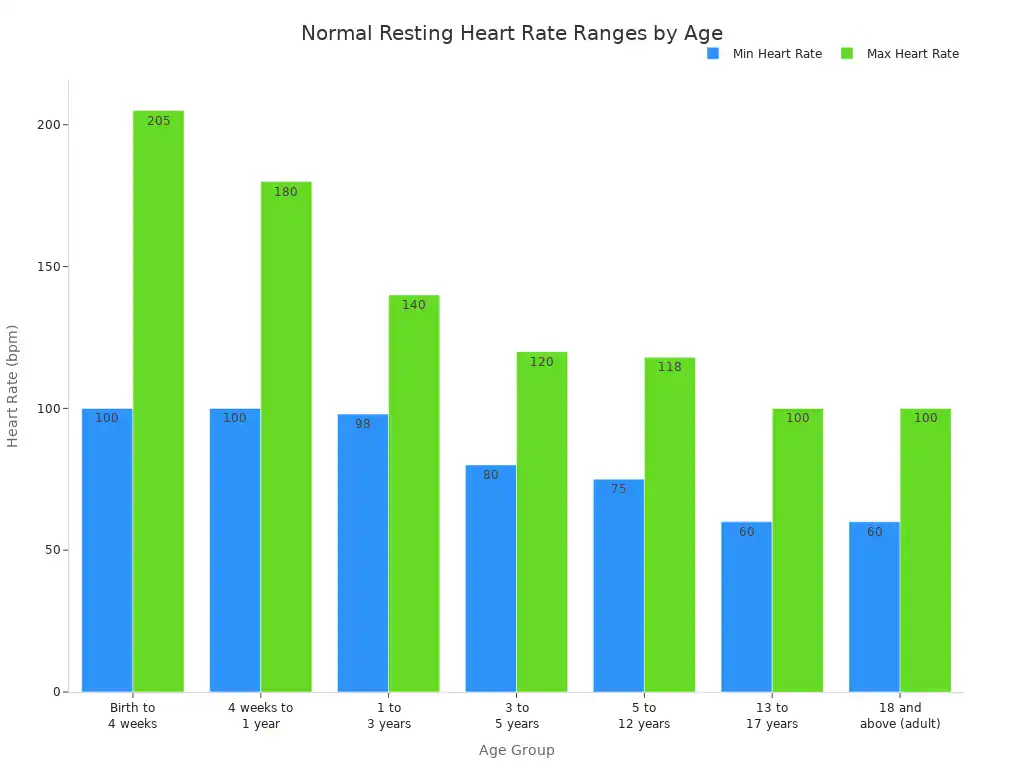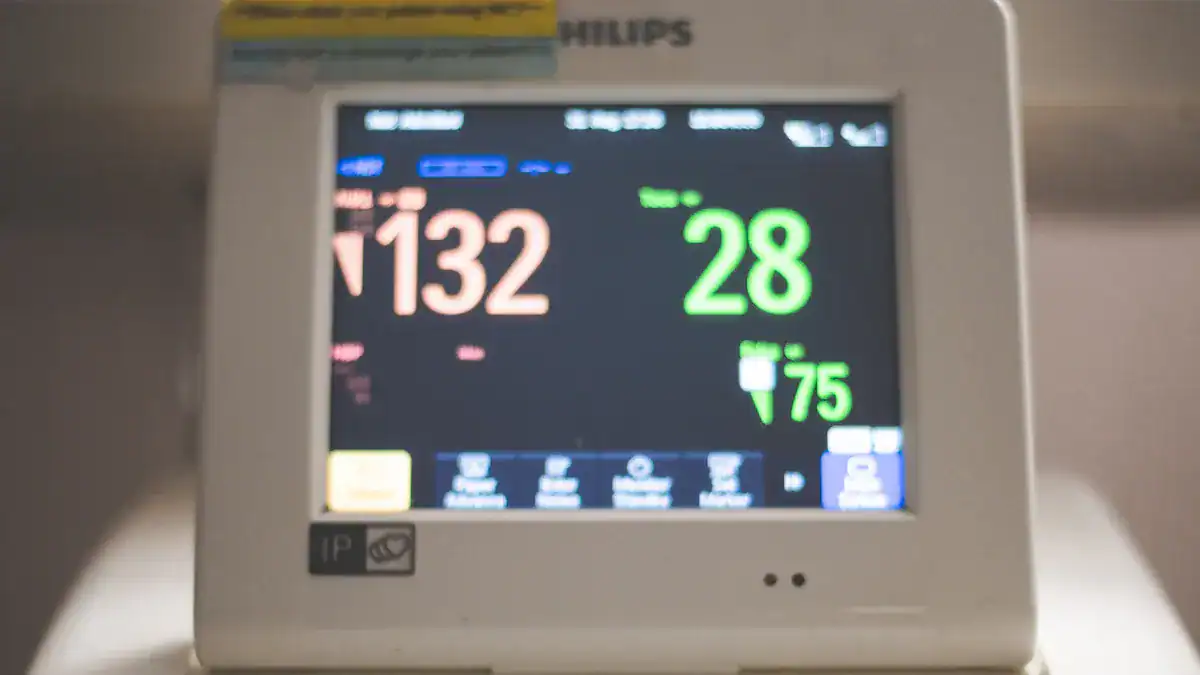
Your resting heart rate offers a simple yet powerful look into your overall health. It is the number of times your heart beats per minute when you are at rest. This number matters greatly for your cardiovascular well-being.
This post provides you with clear, age-specific guidelines and practical advice. You will learn to understand your optimal zone. Knowing your optimal resting heart rate is a crucial step in personal health awareness. We will explore what your resting heart rate chart means for you.
Key Takeaways
- Your resting heart rate shows your heart’s health. It is the number of times your heart beats each minute when you are resting.
- A normal resting heart rate for most adults is 60 to 100 beats per minute. This number changes with your age and how fit you are.
- You can check your heart rate yourself. Place two fingers on your wrist or neck. Count the beats for 30 seconds. Then, multiply that number by two.
- Many things affect your heart rate. These include how much you exercise, any medicines you take, and how stressed you feel.
- See a doctor if your resting heart rate is always too high or too low. Also, see a doctor if you feel dizzy or have chest pain with an unusual heart rate.
Normal Resting Heart Rate by Age
Heart’s Baseline
Your resting heart rate is a key measure of your heart’s health. It tells you how hard your heart works when you are not active. A healthy heart does not need to pump as often to move blood through your body. This section will help you understand what a normal resting heart rate looks like for you. We will show you how your age affects this number.
Your Resting Heart Rate Chart by Age
For most adults, a normal resting heart rate falls between 60 and 100 beats per minute (bpm). Many healthy adults have a “good” range of 55 to 85 bpm. However, this number changes with age. Babies and children generally have higher heart rates than adults. Look at the table below to see the typical ranges for different age groups:
| Age | Normal heart rate (bpm) |
|---|---|
| newborns | 100 to 205 |
| infants under 1 year | 100 to 180 |
| from 1 to 2 years | 98 to 140 |
| from 3 to 5 years | 80 to 120 |
| from 6 to 7 years | 75 to 118 |
| older children, teens, and adults | 60 to 100 |
This chart shows you the general guidelines. You can also see a visual representation of these ranges:

Remember, these are general ranges. Athletes often have a lower resting heart rate, sometimes in the 40s or 50s bpm. This shows their excellent cardiovascular fitness.
Optimal Zone Interpretation
Knowing your normal resting heart rate is a good start. But what is your optimal zone? This is where your fitness level plays a big role. A lower resting heart rate often means you have better heart health and fitness.
Here are some average optimal ranges based on age and fitness level for adults:
| Age Group | Fitness Level | Men (BPM) | Women (BPM) |
|---|---|---|---|
| 18-25 | Athlete | 49-55 | 54-60 |
| Excellent | 56-61 | 61-65 | |
| Good | 62-65 | 66-69 | |
| Average | 70-73 | 74-78 | |
| Poor | Over 80 | Over 85 | |
| 26-35 | Athlete | 49-54 | 54-59 |
| Excellent | 55-60 | 60-64 | |
| Good | 61-64 | 65-68 | |
| Average | 69-72 | 73-76 | |
| Poor | Over 79 | Over 83 | |
| 36-45 | Athlete | 50-56 | 54-59 |
| Excellent | 57-61 | 60-64 | |
| Good | 62-65 | 65-69 | |
| Average | 70-73 | 74-78 | |
| Poor | Over 80 | Over 85 | |
| 46-55 | Athlete | 50-57 | 54-60 |
| Excellent | 58-62 | 61-65 | |
| Good | 63-66 | 66-69 | |
| Average | 71-74 | 74-77 | |
| Poor | Over 81 | Over 84 | |
| 56-65 | Athlete | 51-56 | 54-59 |
| Excellent | 57-61 | 60-64 | |
| Good | 62-67 | 65-68 | |
| Average | 72-75 | 74-77 | |
| Poor | Over 82 | Over 84 | |
| Over 65 | Athlete | 50-55 | 54-59 |
| Excellent | 56-61 | 60-64 | |
| Good | 62-65 | 65-68 | |
| Average | 70-73 | 73-76 | |
| Poor | Over 80 | Over 84 |
For children and adolescents, the optimal ranges also vary:
- Newborn to 1 month: 70-190 beats per minute (bpm)
- 1 to 11 months: 80-160 bpm
- Age 1-2: 80-130 bpm
- Age 3-4: 80-120 bpm
- Age 5-6: 75-115 bpm
- Age 7-9: 70-110 bpm
- Age 10-15: 60-100 bpm
Use this resting heart rate chart to see where you fit. A lower number within your age group often means your heart is more efficient. It is a sign of good cardiovascular health.
Measure Your Resting Heart Rate

You can easily measure your resting heart rate. This gives you valuable information about your heart health. You can use simple methods or modern technology.
Best Time for Measurement
To get the most accurate reading, measure your resting heart rate at the right time. You should measure it when your body is truly at rest. The best time is in the morning, right after you wake up. Do this before you get out of bed. Do not drink coffee or do any activity first.
Research shows the most accurate measurement happens between 3:00 AM and 7:00 AM. Your heart rate is naturally lowest during these early morning hours. This is because your body follows a natural daily rhythm.
Manual Pulse Check
You can check your pulse yourself. This is a simple and effective way to find your resting heart rate. Make sure you have been resting for at least 20 minutes before you start. You should feel relaxed and comfortable.
Here is how to check your pulse on your wrist:
- Turn one arm so your palm faces up.
- Place the middle three fingers of your other hand on your wrist. Put them in the upper groove, below your thumb.
- Press gently until you feel a steady pulsing sensation.
- Count each pulse for 30 seconds.
- Multiply this number by two. This gives you your heart rate in beats per minute.
You can also check your pulse on your neck:
- Place your index and middle fingers on the side of your neck. Find the groove under your jaw, next to your windpipe.
- Press gently until you feel a pulse.
- Count the pulses for 30 seconds.
- Multiply this number by two. This gives you your heart rate.
Using Wearable Devices
Many modern devices can measure your resting heart rate for you. Smartwatches and fitness trackers are common examples. These devices often have a built-in heart rate monitor.
They track your heart rate throughout the day and night. This gives you a continuous record. You can see your average resting heart rate over time. This makes tracking your heart health easy and convenient.
Factors Affecting Resting Heart Rate
Many things influence your resting heart rate. Understanding these factors helps you better interpret your own heart health. A lower resting heart rate often indicates better fitness.
Lifestyle and Habits
Your daily choices greatly impact your heart. Regular aerobic exercise improves blood circulation. It also strengthens your cardiovascular fitness. This helps lower both your blood pressure and your resting heart rate. Dr. Todd Buckingham, an exercise physiologist, notes that activities like running, swimming, or cycling effectively lower your resting heart rate. A study showed that high-intensity aerobic training, even for an hour weekly, reduced resting heart rate more than low-intensity efforts.
You can improve your heart’s efficiency. This means your heart needs fewer beats to pump blood. Knowing your target heart rate for exercise helps you train effectively.
Physical Fitness Level
Your fitness level directly correlates with your resting heart rate. A study found a strong link between VO2Max, a measure of physical fitness, and resting heart rate. Fitter individuals tend to have lower resting heart rates.
Research on adolescents also showed that lower aerobic fitness meant higher resting heart rates. An improved cardiorespiratory fitness increases your heart’s stroke volume. This means your heart pumps more blood with each beat. It needs fewer beats to maintain cardiac output. This lowers your resting heart rate. You can calculate your max heart rate to guide your training intensity.
Emotions and Stress
Your emotional state also affects your heart. Unresolved negative emotions, like anger and anxiety, and chronic stress create an imbalance in your nervous system. This imbalance can increase your resting heart rate. While acute stress temporarily raises your heart rate, chronic stress can lead to decreased heart rate variability. This is a sign of ongoing stress. Managing stress helps maintain a healthy resting heart rate. You can also consider your target heart rate for stress-reducing activities. Knowing your max heart rate helps you understand your body’s limits during stressful periods.
Resting Heart Rate: Normal vs. Concerning

You understand your resting heart rate. Now, learn what is normal and what might be a concern. Your heart rate changes throughout the day. It also changes with your overall health.
Healthy Variations
Your resting heart rate shows daily changes. It is lowest between midnight and 5 AM. It is highest between 5 AM and 5 PM. Your heart rate is also higher during weekdays than on weekends.
You might see the highest average heart rates in winter and the lowest in fall. For healthy people, your average resting heart rate decreases as you get older. For example, it might be 81.6 bpm at age 18-20. It could be 74.2 bpm at age 71-80. Women generally have a resting heart rate about 4.4 bpm higher than men.
A normal resting heart rate for adults is usually between 60 and 100 beats per minute (bpm). This can vary based on your age and fitness level. Athletes often have lower resting heart rates, sometimes as low as 40 bpm. Some medications, like beta-blockers, can also lower your resting heart rate.
The American Heart Association agrees that 60 to 100 bpm is normal. They also know some people have a normal resting heart rate below 60 bpm. Your resting heart rate is unique. It changes with your body and your physical condition. If you exercise regularly, you often have a lower resting heart rate. This shows a balanced nervous system. It helps your body adapt better to daily life.
Low Heart Rate Concerns
Doctors consider a resting heart rate lower than 60 bpm to be lower than normal. This is especially true if you are not physically active. When your resting heart rate is too low, your heart might not pump enough oxygen-rich blood.
This can have serious effects on your body. For people who are not active, a resting heart rate below 60 bpm can signal an electrical problem with your heart. It could also mean a low thyroid level or damage from a heart attack.
However, you usually do not need to worry if you feel fine. This is especially true if you are in good physical shape. A resting heart rate consistently below 60 bpm (even 55 bpm) is called bradycardia. If your resting heart rate is much lower than 60 bpm (even 52 bpm) and you feel unwell, see a doctor. You might need an electrocardiography. Symptoms of a concerningly low heart rate include:
- Fainting or feeling lightheaded
- Shortness of breath
- Chest pain
- Confusion or memory problems
- Feeling tired or weak
- Dizziness
- Heart palpitations
- Difficulty exercising
These symptoms mean your brain and organs are not getting enough oxygen. This can lead to serious issues like heart failure or an increased risk of stroke.
High Heart Rate Concerns
A consistently high resting heart rate can also be a concern. It might mean your heart works too hard. This can indicate underlying health issues. It could also show high stress levels. If your resting heart rate is often above 100 bpm, you should talk to your doctor. This is especially important if you experience symptoms like dizziness or shortness of breath.
A high resting heart rate can put extra strain on your heart over time. This can increase your risk for heart problems. You want to keep your heart healthy. Knowing your normal resting heart rate helps you spot an abnormal heart rate.
When to See a Doctor
You monitor your resting heart rate. You understand what is normal. Sometimes, you need to talk to a doctor. Knowing when to seek medical advice is important for your heart health.
Persistent Irregularities
Your resting heart rate can vary. This is normal. However, you should consult a doctor if you notice persistent irregularities. This means your heart rate is consistently too high or too low. It also means if it feels irregular for no clear reason. For example, if your resting heart rate stays above 100 bpm or below 60 bpm, and you are not an athlete, you should get it checked. Your doctor can help determine the cause.
Accompanying Symptoms
You need immediate medical attention if an irregular resting heart rate comes with certain symptoms. These symptoms could signal a serious problem. You should seek help if you experience chest pain or discomfort. Other concerning signs include shortness of breath or difficulty breathing.
You might feel dizzy or lightheaded. Fainting or near-fainting episodes are also serious. You could also feel confused or have an altered mental state. If these symptoms occur suddenly, or with chest pain, or lead to fainting, they could indicate life-threatening issues. These issues include arrhythmias or a heart attack.
Proactive Health Discussions
Regular check-ups are key to heart health. You should discuss your heart health with your doctor. Adults over 18 should have medical checkups every five years until age 40. After age 40, checkups should happen every one to three years.
You need more frequent evaluations if you take prescription medications. Your blood pressure should be checked at least every two years starting at age 18. You should check your cholesterol every 4-6 years if you are over 20. These proactive discussions help you stay healthy.
Knowing your resting heart rate is vital for managing your personal health. Your resting heart rate varies by age. Measuring it is simple. Many factors can influence your resting heart rate. Use this resting heart rate chart and information as a guide. It is not a definitive diagnosis. This resting heart rate chart helps you understand your body. Always consult your doctor for personalized advice. Discuss any heart health concerns with them. Be proactive about your health. Schedule regular check-ups.
FAQ
What is a normal resting heart rate?
For most adults, a normal resting heart rate is between 60 and 100 beats per minute (bpm). Athletes often have lower rates, sometimes 40-50 bpm. Your age and fitness level influence your specific normal range.
How do I measure my resting heart rate?
You can measure it manually. Place two fingers on your wrist or neck. Count beats for 30 seconds, then multiply by two. The best time is in the morning, before you get out of bed. Wearable devices also track it for you.
What factors can affect my resting heart rate?
Many things influence your heart rate. Your physical fitness level is a big one; fitter people often have lower rates. Medications, stress, emotions, and daily habits like exercise and diet also play a role.
When should I worry about my resting heart rate?
Consult a doctor if your resting heart rate is consistently above 100 bpm or below 60 bpm (and you are not an athlete). Seek immediate help if you have symptoms like chest pain, dizziness, or shortness of breath with an irregular heart rate.




